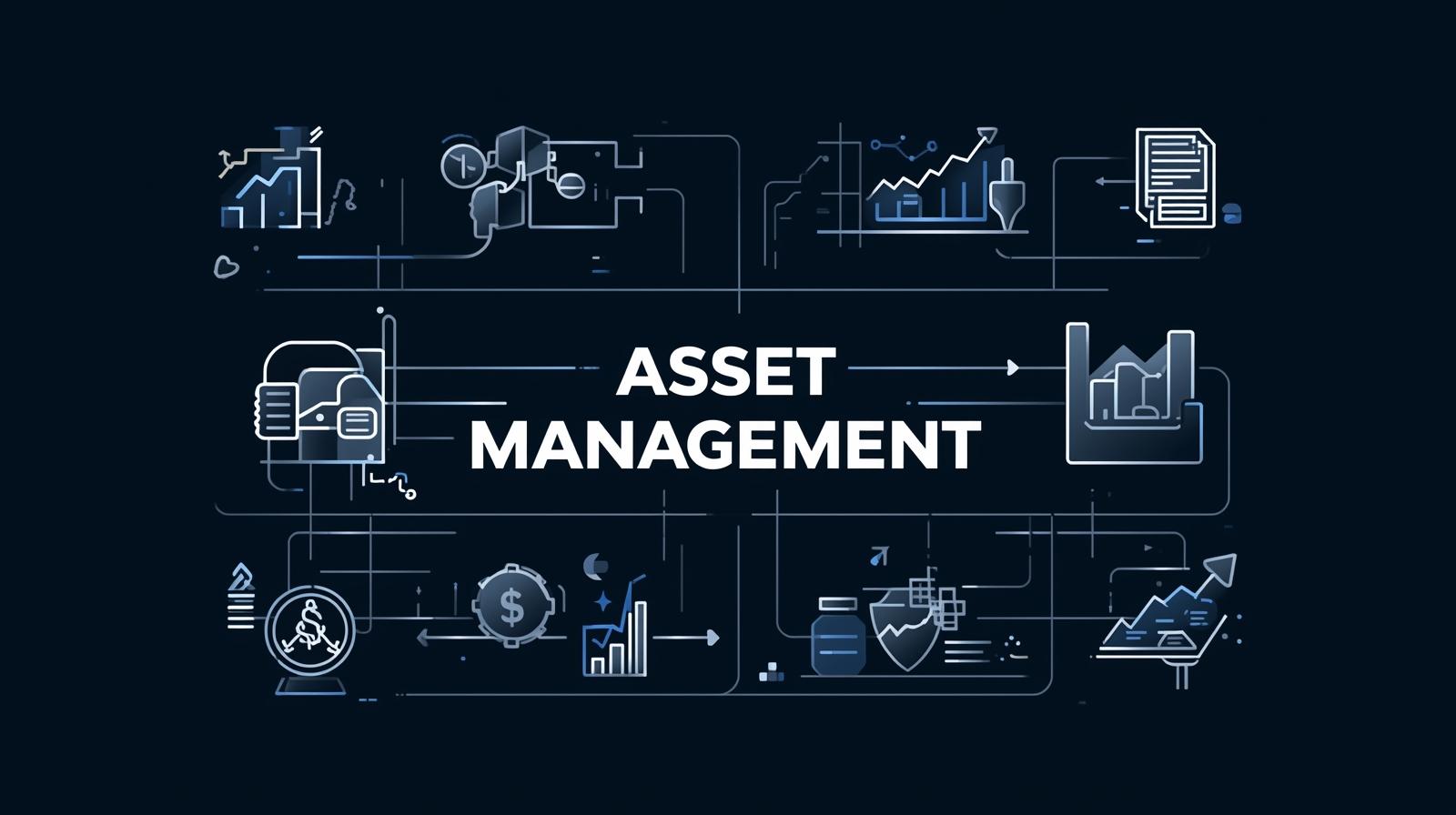The asset management market demand in banking industry continues to evolve rapidly as financial institutions navigate a landscape marked by technological innovation and shifting investor preferences. In 2025, banks are witnessing heightened interest from highnetworth individuals and institutional clients seeking diversified portfolios amid economic uncertainties. This surge reflects broader market dynamics where asset management services have become integral to banking operations, offering revenue diversification beyond traditional lending. According to recent outlooks, the integration of artificial intelligence and sustainable investing is fueling this demand, with global assets under management projected to exceed previous records. Banks are positioning themselves as holistic wealth advisors, blending core banking with sophisticated asset strategies to meet client expectations.
Asset management market demand in banking industry is not just a trend but a strategic imperative for survival and growth in a competitive arena. Clients increasingly demand personalized solutions that align with their risk profiles and long term goals, prompting banks to enhance their offerings. The lower interest rate environment anticipated in 2025 is expected to channel more deposits into investment products, boosting fee based revenues for banks.
The global Asset Management System Market was valued at USD 16.97 billion in 2024 and is projected to grow from USD 17.64 billion in 2025 to USD 26.41 billion by 2030, at a CAGR of 8.4% during the forecast period.

Defining Asset Management in the Banking Sector
Asset management within the banking sector involves the professional oversight of client investments to achieve optimal returns while mitigating risks. Banks leverage their extensive client bases to offer tailored services ranging from mutual funds to alternative investments like private equity and debt. This function has grown from a supplementary service to a core revenue driver, especially as noninterest income becomes vital amid volatile net interest margins. In the context of asset management market demand in banking industry, institutions are focusing on scalable platforms that integrate seamlessly with core banking systems. The emphasis on client centric approaches ensures that asset allocation strategies resonate with diverse demographics, from millennials seeking ESG focused portfolios to retirees prioritizing income generation.
The role of asset management in banking extends beyond mere investment advice to encompass holistic financial planning. Banks are increasingly incorporating tax optimization and estate planning into their asset management frameworks, enhancing client loyalty and lifetime value. This integrated model addresses the asset management market demand in banking industry by providing end to end solutions that differentiate traditional banks from fintech disruptors.
Historical Evolution of Asset Management Practices
The asset management market demand in banking industry traces its roots to the post World War II era when banks began formalizing wealth preservation services for affluent clients. Over decades, deregulation in the 1980s and 1990s spurred innovation, leading to the proliferation of mutual funds and index products under bank umbrellas. This evolution mirrored broader economic expansions, where rising disposable incomes amplified the need for professional investment guidance. Today, the asset management market demand in banking industry reflects a maturation phase, with banks adapting to digital natives who prioritize mobile accessible portfolios. Historical data shows a steady compound annual growth rate in assets under management, underscoring the sector’s resilience through financial crises.
Key Drivers Fueling Asset Management Market Demand
Several interconnected factors are propelling the asset management market demand in banking industry forward into 2025 and beyond. Economic recovery signals, including stable market conditions cited by 55 percent of industry respondents, create fertile ground for increased investment activities. Lower financing costs, noted by 54 percent, encourage refinancing and capital deployment, directly boosting asset inflows to bank managed funds. The rise of alternative assets like private debt, anticipated for high returns by 36 percent of experts, is drawing institutional capital seeking yields beyond traditional fixed income. These drivers collectively enhance the appeal of bank offered asset management, positioning them as gateways to diversified opportunities.
Demographic shifts also play a pivotal role in escalating asset management market demand in banking industry. Aging populations in developed markets are channeling retirement savings into managed portfolios, while emerging markets see a burgeoning middle class eager for wealth building tools. Technological enablers such as AI driven personalization further amplify this, allowing banks to tailor offerings that resonate with individual life stages. Sustainability concerns are another catalyst, with over 55 percent of asset managers ranking ESG integration as a top trend, prompting banks to develop green investment products. This multifaceted demand landscape requires banks to remain agile, blending traditional expertise with forward looking innovations to maintain client trust and market share.
Technological Innovations Transforming Asset Management
Technological advancements are at the forefront of reshaping the asset management market demand in banking industry, with AI and generative AI leading the charge. Banks are transitioning from experimental phases to developmental implementations, with 39 percent now actively building AI capabilities for portfolio optimization. This shift enables predictive analytics that anticipate market movements, enhancing decision making for both advisors and clients. In the asset management market demand in banking industry, such tools democratize access to sophisticated strategies, previously reserved for elite investors. The integration of blockchain for secure transaction processing further streamlines operations, reducing settlement times and costs associated with asset transfers.
The adoption of data analytics in asset management is revolutionizing how banks engage clients, offering hyper personalized recommendations based on behavioral insights. For instance, AI powered chatbots provide real time portfolio adjustments, meeting the on demand expectations of modern investors. This technological prowess addresses the asset management market demand in banking industry by improving efficiency and client satisfaction scores. Moreover, the focus on cybersecurity ensures that these innovations do not compromise data integrity, a critical concern in an era of rising cyber threats.
Global Perspectives on Asset Management Growth
From a global vantage, the asset management market demand in banking industry varies by region, with North America leading in innovation and scale. US banks dominate with robust wealth management divisions, capturing inflows from tech savvy investors amid stock market gains. In Europe, slower loan growth at 3.1 percent contrasts with strong asset shifts due to falling rates, prompting diversification into equities and alternatives. The asset management market demand in banking industry in Asia Pacific surges with rising affluence, where banks like those in China and India are scaling digital platforms to serve millions. This regional mosaic highlights the need for localized strategies that respect cultural and economic nuances.
Emerging markets present untapped potential in the asset management market demand in banking industry, driven by urbanization and financial inclusion initiatives. African and Latin American banks are partnering with global players to introduce micro investment products, bridging gaps for underserved populations. Meanwhile, mature markets grapple with fee compression, pushing innovation in low cost ETFs and index funds. Cross border collaborations are key, enabling knowledge transfer and product standardization.
Challenges Impeding Asset Management Expansion
Despite robust prospects, the asset management market demand in banking industry faces hurdles like intensifying competition from fintechs eroding traditional margins. Neo banks offer fee free advisory, pressuring legacy institutions to innovate or risk client attrition. Credit losses in consumer loans, potentially rising with delinquencies, could strain balance sheets and divert focus from growth initiatives. The asset management market demand in banking industry requires banks to balance expansion with prudent risk controls, especially in volatile fixed income segments. Talent shortages in AI and data expertise further complicate scaling, as larger players hoard top specialists.
Regulatory and geopolitical risks add layers of complexity to the asset management market demand in banking industry. Heightened scrutiny on political donations and policy shifts could disrupt cross border flows, while trade tensions impact global asset valuations. Banks must invest in scenario planning to safeguard portfolios against these uncertainties. Moreover, client dissatisfaction with opaque fees, particularly among high net worth segments, demands revamped structures like performance based models. Overcoming these challenges demands resilience, with banks channeling resources into compliance tech and transparent communication to sustain momentum.

Strategies for Banks to Harness Market Demand
To thrive amid asset management market demand in banking industry, banks should prioritize digital transformation for seamless client experiences. Investing in unified platforms that merge banking and investment views fosters loyalty and upselling opportunities. Collaborations with fintechs can accelerate innovation, blending bank stability with agile tech solutions. The asset management market demand in banking industry rewards those who emphasize education, offering webinars on market trends to empower clients. Fee revisions aligning with value delivery, such as bundled services, can mitigate commoditization risks while enhancing perceived worth.
Proactive talent development is essential for addressing the asset management market demand in banking industry. Banks can establish internal academies for upskilling in ESG and AI, ensuring teams stay ahead of curve. Geographic expansion into high growth markets like Southeast Asia provides diversification, tapping into nascent wealth pools. Performance metrics should evolve to include client satisfaction alongside AUM growth, guiding holistic strategies. By fostering a culture of continuous improvement, banks can convert challenges into competitive advantages, securing long term leadership in this vital sector.
Emerging Trends Shaping Future Demand
Looking ahead, the asset management market demand in banking industry will be defined by the expansion of active ETFs, with 86 percent of launches focusing on systematic strategies. This trend redefines traditional management, offering liquidity and transparency that appeal to retail investors via bank channels. Banks must curate disciplined portfolios to avoid performance chasing pitfalls. The asset management market demand in banking industry evolves with these, urging institutions to blend passive efficiency with active alpha generation.
Private markets integration via accessible vehicles like interval funds is another frontier in the asset management market demand in banking industry. Investor appetite for alternatives grows, with options based strategies gaining traction for income enhancement. Regulatory tailwinds, including potential US streamlining, could unleash M&A activity, funneling assets into bank managed vehicles. AI’s agentic workflows promise operational leaps, from automated compliance to dynamic rebalancing. These trends signal a vibrant future, where banks that embrace change will dominate the demand narrative.
Download PDF Brochure for More Info @ https://www.marketsandmarkets.com/pdfdownloadNew.asp?id=255619316
Sustaining Growth in Asset Management
In summary, the asset management market demand in banking industry stands at an inflection point, brimming with opportunities fueled by innovation and client evolution. Banks that integrate technology, prioritize sustainability, and navigate regulations adeptly will reap substantial rewards. As 2025 unfolds with projected revenue upticks and AUM expansions, strategic foresight remains paramount. The asset management market demand in banking industry encapsulates a broader shift toward integrated financial ecosystems, where banks serve as trusted stewards of wealth. Embracing this demand not only drives profitability but also contributes to inclusive economic progress globally.
Ultimately, success hinges on authentic client engagement and adaptive excellence in the asset management market demand in banking industry. Institutions must view challenges as catalysts for refinement, ensuring offerings resonate across generations and geographies. With stable ROEs and burgeoning inflows, the trajectory points upward for those aligned with market pulses. Forward thinking banks will lead this charge, shaping a resilient sector that benefits all stakeholders.
Explore In-Depth Semiconductor & Electronics Market Research:
https://www.marketsandmarkets.com/semiconductorand-electonics-market-research-87.html
FAQs
What is driving the asset management market demand in banking industry in 2025?
Lower interest rates, AI adoption, and ESG integration are key drivers, shifting deposits to investments and boosting fees by up to 13 percent in investment banking.
How is technology impacting asset management in banks?
AI and data analytics enable personalized portfolios, with 39 percent of firms in developmental stages, enhancing efficiency and client engagement.
What challenges do banks face in meeting this demand?
Competition from fintechs, fee transparency regulations, and talent shortages pose hurdles, requiring innovation in fee structures and upskilling programs.
How can banks capitalize on private market opportunities?
By offering accessible vehicles like interval funds and partnering for alternatives, banks can tap into high ROI private debt and equity demands.
See The Latest Semiconductor Reports:
Proximity Sensor Market Size, Share & Trends : https://www.marketsandmarkets.com/Market-Reports/proximity-sensor-market-36281914.html
Terahertz Technology Market Size, Share & Trends : https://www.marketsandmarkets.com/Market-Reports/terahertz-technology-market-71182197.html
Cryocooler Market Size, Share & Trends : https://www.marketsandmarkets.com/Market-Reports/cryocooler-market-247727537.html
Time-Sensitive Networking Market Size, Share & Trends : https://www.marketsandmarkets.com/Market-Reports/time-sensitive-networking-market-215000493.html
Actuators Market Size, Share & Trends : https://www.marketsandmarkets.com/Market-Reports/global-actuators-market-59465451.html
Battery Technology Market Size, Share & Trends: https://www.marketsandmarkets.com/Market-Reports/battery-technology-market-253343109.html
